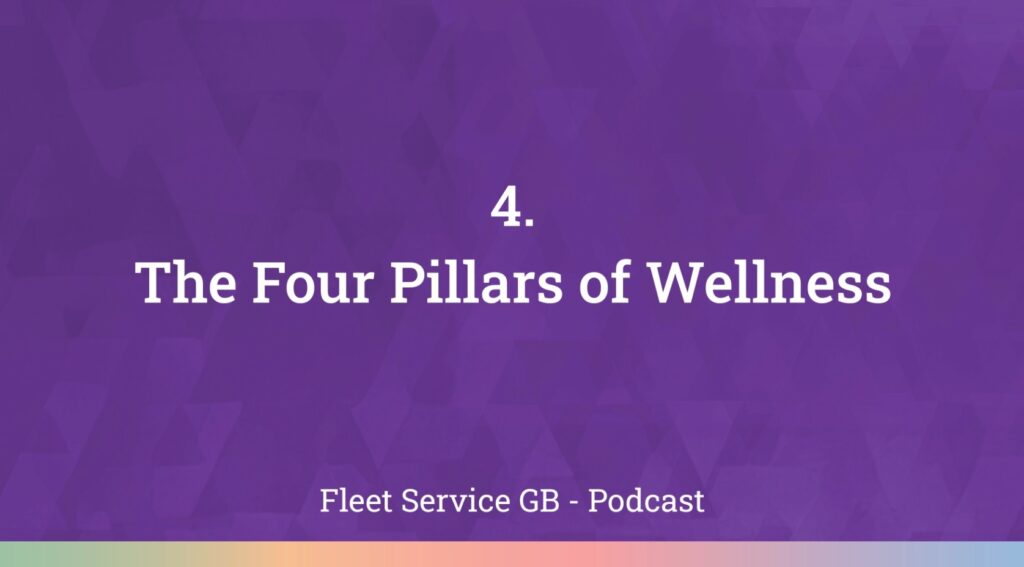Driving is a daily activity for millions, yet distractions behind the wheel remain a major cause of accidents. Recent findings reveal that up to 63% of drivers admit to being distracted while driving, a startling figure that highlights a growing concern. But what truly causes distraction, and how can we improve driver focus to reduce crashes?
Wellbeing expert Andy Neale sheds light on the often-overlooked physiological and psychological factors affecting driver concentration. This article explores the key pillars of wellbeing that support safe driving and offers practical advice to stay alert on the road.
Watch the Podcast here.
What Is Driver Distraction Really About?
Beyond External Distractions: The Mind’s Role
When people hear “distracted driving,” they often imagine phones, passengers, or external stimuli pulling attention away from the road. While these are common causes, Andy explains the biggest distractions are often internal, thoughts, stress, fatigue, and poor physical condition.
Contrary to the misconception that drivers crash because they lack skill, the reality is crashes usually happen because of poor decision-making linked to physiological states.
Familiar Routes Breed Complacency
Research and experience show most accidents occur within 10 miles of home, on familiar routes where drivers tend to relax their focus. Unlike high-stakes environments (like race circuits), everyday driving on known roads can lull drivers into a false sense of security, reducing concentration to as little as 25% of the time.
The Four Pillars of Wellbeing That Impact Driving
Andy Neale identifies four critical physiological factors that affect driver concentration and decision-making: fatigue, stress, hydration, and nutrition.
Fatigue: The Hidden Danger
Sleep is the most important factor in combating fatigue, yet most people are never taught how to sleep properly. Fatigue impairs judgment and reaction time, increasing the risk of accidents. Planning sleep routines just like any other part of your day is crucial to ensure you are rested and alert behind the wheel.
Stress Management for Mental Fitness
Stress diverts mental resources away from driving tasks. Andy recommends simple daily check-ins using apps that assess mood and stress levels. Stress isn’t inherently bad; it can be managed with techniques like focused breathing exercises and positive reframing to maintain calm and clarity on the road.
Hydration: Fuel for the Brain
The brain is about 80% water, and even slight dehydration (2%) can reduce concentration by 20%. Staying hydrated is simple but often neglected. Avoid energy crashes from coffee or sugary snacks by choosing low-GI foods that provide steady energy.
Nutrition: Sustained Energy for Peak Focus
Proper nutrition complements hydration. Fast food and sugary snacks cause energy spikes and dips, impairing focus. Instead, opt for balanced meals rich in nuts, seeds, and whole foods that help maintain consistent energy levels throughout your drive.
Practical Tips for Safer Driving
Plan Your Sleep and Daily Routine
Create a consistent bedtime routine that allows for full sleep cycles and wind-down activities. Communicate your sleep needs with family or housemates to minimise disturbances.
Stay Hydrated with Water, Not Just Caffeine
Carry water and drink regularly, especially before and during long drives. Limit caffeine intake to avoid energy crashes and disrupted sleep.
Manage Stress Proactively
Use simple tools like mood-tracking apps or breathing exercises to manage stress levels. Recognise when you need a break or support, and don’t ignore your emotional state.
Eat Balanced, Low-GI Meals
Choose foods that provide sustained energy, especially before driving. Avoid large, late-night meals that disrupt digestion and reduce morning hunger cues.
Why Driver Training Must Include Wellbeing
Traditional driver training focuses on physical skills, steering, braking, signaling, but neglects the mental and physical states required for safe driving. Andy stresses that mental skills like concentration, observation, and anticipation depend on wellbeing pillars.
Wellbeing workshops integrated into driver training help employees understand how to manage fatigue, stress, hydration, and nutrition effectively, leading to safer driving behaviour and fewer accidents.
Conclusion: Small Changes Make Big Differences
Distractions won’t disappear, but by addressing the four pillars of wellbeing, drivers can improve concentration and make better decisions on the road. Simple steps like drinking water, planning sleep, managing stress, and eating properly can save lives.
For organisations, investing in wellbeing-focused driver training is a cost-effective way to protect employees and reduce road accidents. As Andy Neale reminds us, “Driving is the highest risk most of us will face, being physiologically prepared is key.”


